Contributing £ 4
Acknowledgment on the WEB
Those who made this collaboration will be incorporated into the project co-financiers section on the Web www.globalvisualhealth.org
> 13 Co-financiers
Goteo ha construido una historia única en el mundo del micromecenazgo. ¿Quieres seguir formando parte de ella?
You have to sign in to see this page
Salud visual para la población infantil
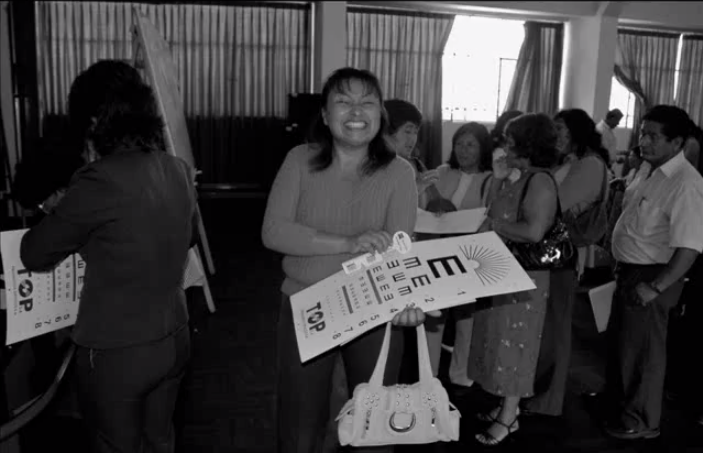

 Min.
Min.
 Opt.
Opt.
 Provincia de Abancay Departamento de Apurímac. Perú.
Provincia de Abancay Departamento de Apurímac. Perú.
Those who made this collaboration will be incorporated into the project co-financiers section on the Web www.globalvisualhealth.org
Those who made this collaboration will receive by email a personalized digital calendar with pictures of the project. In addition, they will be incorporated into the project co-financiers section on the Web www.globalvisualhealth.org.
Those who made this collaboration will receive by mail a personalized calendar with pictures of the project (shipping limited to the Iberian Peninsula calendar) along with the digital version of the calendar that will be sent via email. In addition, they will be incorporated in the project co-financiers section on the Web www.globalvisualhealth.org.
Those individuals, companies, organizations / associations that want to co-finance the project with 100 euros will appear as bronze co-financiers in the sponsors section on the web www.globalvisualhealth.org
Those 15 institutions wanting to co-finance this project will appear mentioned in the acknowledgments section of scientific publications derived of this intervention.
Those individuals, companies, organizations / associations that want to co-finance the project with 250 euros will appear as bronze co-financiers in the sponsors section on the web www.globalvisualhealth.org and in related social networks
Those individuals, companies, organizations / associations that want to co-finance the project with 500 euros will appear as bronze co-financiers in the sponsors section on the web www.globalvisualhealth.org and in related social networks.
Education to reduce visual impairment in preschool, primary and secondary school children at the department of Apurimac in Peru with teachers' participation.
 Material
Material
|
Minimum | Optimum |
|---|---|---|
|
Training material and vision test
Edit and print training guides for teachers and Charts for vision tests adapted for children.
|
£ 877 | |
|
Required treatment for children with vision problems
We consider that parental involvement in the payment of treatments its positive in order to improve adhesion and use of glasses but we want to eliminate all possible barriers to access to treatment and subsidize most of the costs.
|
£ 1,534 | |
|
Clinical equipment for eye exam
Acquisition of equipment required for visual and ocular examination, allowing measurement of refractive error and evaluation of the fundus and the eye.
|
£ 1,008 | |
|
Materials for health promotion in the school community
During the pilot program we could see the importance of adequately informing parents specially to those with childs affected with vision problems in order to receive an eye exam and the required treatment. Teachers themselves requested that these materials should be improved to help them to spread the message.
|
£ 657 |
 Infrastructure
Infrastructure
|
Minimum | Optimum |
|---|---|---|
|
Transportation to Health Center
To Support families for transportation to the health center. The program will be able of reaching children from remote villages thanks to the participation of trained teachers. Children identified with visual problems have to travel to the health center which counts with the necessary equipment for diagnosis and appropriate treatment in each case. Also local transportations will be necessary among teachers and program evaluators.
|
£ 526 |
 Task
Task
|
Minimum | Optimum |
|---|---|---|
|
Hosting and web design
To improve the accessibility and expansion of the program through adapting educational materials to online edition, and to set up a virtual campus. Additionally we consider to design educational materials related to the development of visual intelligence.
|
£ 877 | |
| Total | £ 3,944 | £ 5,478 |
The objective of this programme is to implement a visual health school program, by training 200 teachers in conducting vision test adapted to children and subsequent performing eye examinations. It also provides treatments in those with vision problems with a procedure that is willing to a clinically valid and an economically sustainable model which could be spread to other regions of Spain and Latin America.
More than 12 million children between 5 and 12 years suffer visual disability worldwide by uncorrected refractive errors, mostly concentrated in less developed countries where access to education for children with visual disabilities drops to 10% even thought the actions to correct these vision problems are the most expensive health.
We know that the prevalence of children who need to wear eye glasses in the Andean region of Apurimac exceeds 6%, without considering other ocular pathologies. Barriers to solve these problems in regions with difficult access to health services are usually lack of knowledge to detect what is wrong since children manifest their first vision problems, lack of eye care programs in schools, small number of skilled health personnel in eye care and the high cost of glasses and treatments.
Research has shown that teachers can identify vision problems on children if they have the adequate resources and they are trained for it. Teachers also contribute to health promotion in the community in a very direct way.
Program evaluation is designed to be transversal and participatory and it will be performed by the institution of London School of Hygiene and Tropical Medicine collaboration.
The initiative will provide continuity to a pilot research that Entretodos Foundation carried out in the Department of Apurimac in 2010 with the participation of 400 children who were screened by teachers and supervised by the health team of the Eye Hospital in Abancay.
On this occasion training materials and procedures have been improved and 200 teachers are going to be trained on, rising the number of children to be screened from kindergarten, primary and secondary education.
Finally we´ll develop a website to support the program in the dissemination of training materials and performing or visual screening test aimed to children and referral of those with visual impairments to the health center (Ophthalmic Medical Foundation Sacred Heart of Jesus) for subsequent eye examination and application of appropriate treatment.
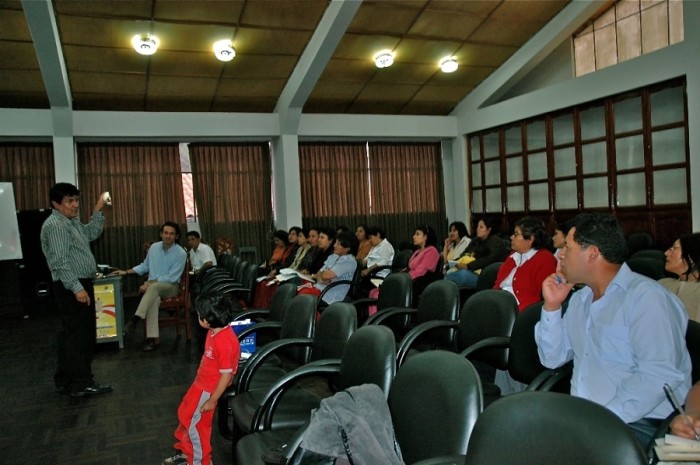
The execution of the program will help to integrate eye care programs in the school environment by the competent institutions with the aim of reducing the prevalence of uncorrected vision problems in children population. The objective is aligned with international strategies willing to fight the visual disability preventable causes. It will also help to strengthen the partner organization in its ability to provide treatment and quality health services.
200 school teachers will be given the training and resources to carry out a visual screening to 4000 children aged between 5 and 12 years in the region of Abancay, Apurimac, Peru. We expect that more than 500 children will be detected vision problems. Those children will obtain the necessary treatment.
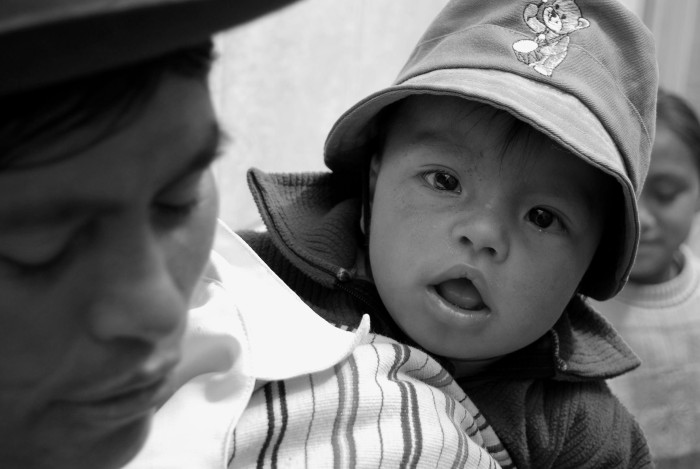
Contribute to co-finance the project in relation to:
Improve the training materials and designing educational activities related to train learning and visual skills and prevention of vision problems in the community.
Contribute to provide the necessary treatment of children with vision problems.
Develop information and communication technologies to support training and allow a better assimilation of the content and the replicability of the program in other regions or countries.
Give transport facilities to teachers who live in rural areas to the training course and to the children identified with vision problems and their parents to the health center to guarantee access to diagnosis and treatments.
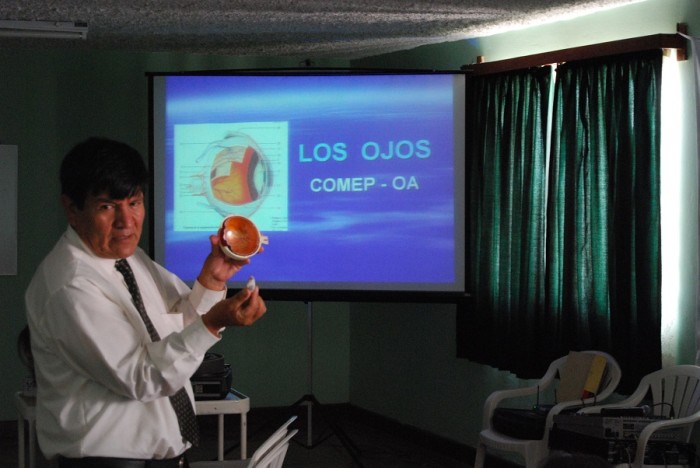
The Entretodos Foundation is formed and managed by a group of volunteers from different backgrounds, ages and occupations, who share the enthusiasm for this project and contribute to provide continuity. We are all over the Spanish geography. Our work is supported by all partners who make totally disinterested periodic contributions to assist in the continuation of the project.
In 2010 Entretodos Foundation conducted a pilot cross-sectional study to assess the need of an eye health school program and to check the validity of the procedure which included the training of teachers to identify vision problems on children. The intervention was done in 19 schools selected by the Regional Directorate of Education Apurimac and was conducted in a sample of 400 children between 3 and 12 years. 9 kindergarten and 10 primary teachers were given an eight hours training in visual screening supported by materials and monitored activities.
After examining the validity of the obtained results, it was concluded that the prevalence of visual impairment was significant in both preschool and elementary students. The ability to identify children with vision loss by teachers was superior to 90%. Therefore after teachers were trained, they were a valid agent to identify children with visual impairments and program was highly appreciated by local educational authorities, parents and teachers.
The evaluation of the procedure considered the perspective of teachers and valuable contributions to the improvement of the procedure were collected. The results of this pilot program were published in February 2014 in the Global Health Action journal (http://dx.doi.org/10.3402/gha.v7.22656).
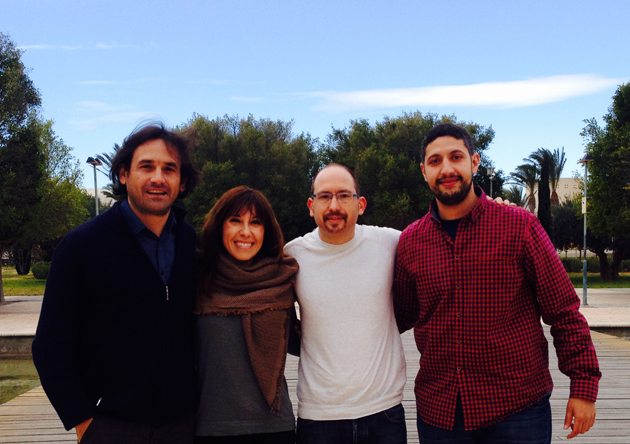



Acknowledgment on the WEB
Those who made this collaboration will be incorporated into the project co-financiers section on the Web www.globalvisualhealth.org
> 13 Co-financiers
Digital photo calendar
Those who made this collaboration will receive by email a personalized digital calendar with pictures of the project. In addition, they will be incorporated into the project co-financiers section on the Web www.globalvisualhealth.org.
> 08 Co-financiers
Digital album and printed calendar
Those who made this collaboration will receive by mail a personalized calendar with pictures of the project (shipping limited to the Iberian Peninsula calendar) along with the digital version of the calendar that will be sent via email. In addition, they will be incorporated in the project co-financiers section on the Web www.globalvisualhealth.org.
> 15 Co-financiers
Bronze diploma and web mention
Those individuals, companies, organizations / associations that want to co-finance the project with 100 euros will appear as bronze co-financiers in the sponsors section on the web www.globalvisualhealth.org
> 05 Co-financiers
Acknowledgment in scientific publications
Those 15 institutions wanting to co-finance this project will appear mentioned in the acknowledgments section of scientific publications derived of this intervention.
> 01 Co-financiers
Silver diploma and web mention
Those individuals, companies, organizations / associations that want to co-finance the project with 250 euros will appear as bronze co-financiers in the sponsors section on the web www.globalvisualhealth.org and in related social networks
> 01 Co-financiers
Gold diploma and web mention
Those individuals, companies, organizations / associations that want to co-finance the project with 500 euros will appear as bronze co-financiers in the sponsors section on the web www.globalvisualhealth.org and in related social networks.
> 03 Co-financiers
Se necesitan colaboradores que puedan traducir al inglés, portugués y francés los materiales del curso
Se requieren donaciones de equipos clínicos para el examen visual como: Retinoscopios, Oftalmoscopio, Autorefractómetro o Tonómetro. Además se pue
Se requiere hacer una recopilación de recursos pedagógicos en español disponibles online: enlaces de interés, materiales descargables, descripció